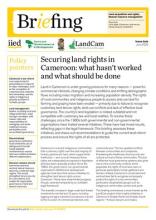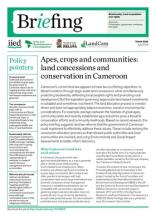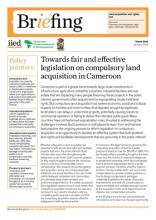Land Library Search
Through our robust search engine, you can search for any item of the over 73,000 highly curated resources in the Land Library.
If you would like to find an overview of what is possible, feel free to peruse the Search Guide.
/ library resources
Showing items 1 through 9 of 11.Land in Cameroon is under growing pressure for many reasons — powerful commercial interests, changing climate conditions and shifting demographic flows including mass migration and increasing population density.
This summary assesses the gaps in the provision;understanding and implementation of laws/articles and their impact on women and VGs with respect to land use rights and provides a strategy to overcome these legal constraints that affect women and VGs land rights security..This resource was publish
This strategy assesses the gaps in the provision;understanding and implementation of laws/articles and their impact on women and vulnerable groups (VGs) with respect to land use rights and provides a strategy to overcome these legal constraints that affect women and VGs land rights security..This
This case study assesses how a new agricultural loan product is helping smallholder farmers to access loans by using their land use right as a guarantee..This resource was published in the frame of the Land Investment for Transformation (LIFT) Programme.
Cameroon’s current land law appears to have two conflicting objectives: to attract investors through large-scale land concessions while simultaneously protecting biodiversity, defending local people’s rights and promoting rural development.
This study examines the reasons why landholders choose to formally or informally transact land use rights and provides recommendations on how to increase the number of households formally registering transactions..This resource was published in the frame of the Land Investment for Transformation
Cameroon is part of a global trend towards large-scale investments in infrastructure, agriculture, extractive industries, industrial facilities and real estate that are displacing many people.
From the mid-2000s, a commodity boom underpinned a wave of land use investments in low- and middle-income countries.
This article reflects on the Tenure Guidelines as a tool for addressing resource governance challenges.






